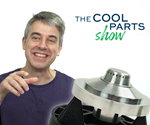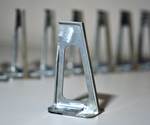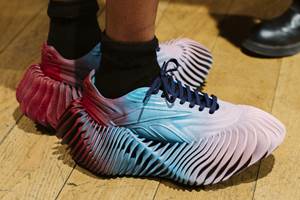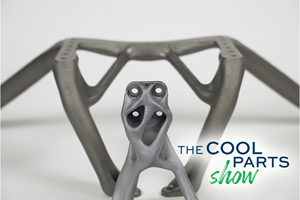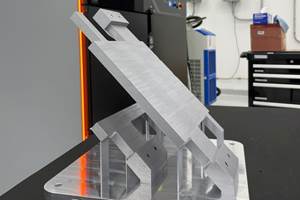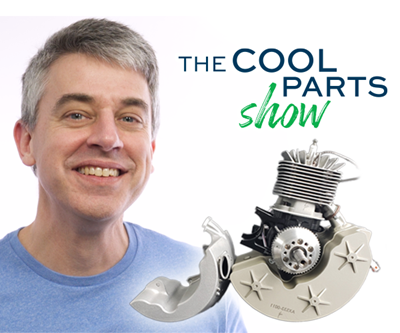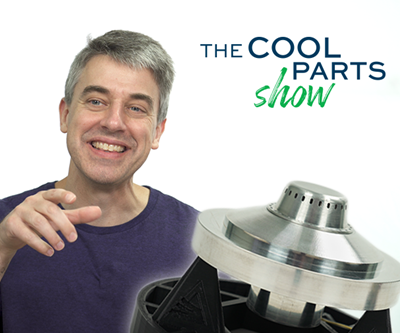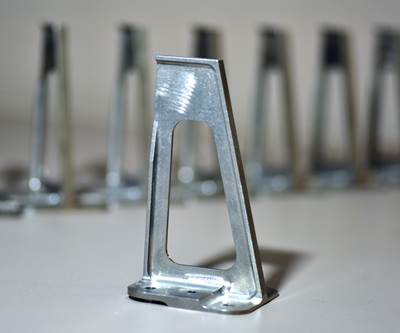This 3D Printed Turbine Replaced 61 Parts With 1: Here Is What That Means
Additive manufacturing makes possible a radical microturbine that increases power-to-weight ratio, reduces cost and extends time between overhaul.

Cross-section of a Sierra Turbines engine combustor highlighting the complexity of the interior. Notice the thin air foils, and smooth lattice that helps the combustor effectively atomize fuel prior to combustion. With traditional manufacturing, this part would have required the assembly of 61 discrete components, but additive manufacturing consolidated it into a unified geometry with fine details and features that are unattainable via any other method. Photo Credit: Velo3D
When we founded Sierra Turbines in 2017 in San Jose, California, we were looking to serve markets hungry for advances in compact, power-dense power generation for applications in auxiliary power units, backup generators and other standby electrical-generation needs. Another market is that of propulsion systems for unmanned aerial vehicles, both for jet propulsion and hybrid-electric drive-trains.
We had some pretty straightforward design objectives from the start, but they were actually quite lofty when compared with existing microturbines: A 40× increase in time-between-overhaul (TBO, which is typically only 40-50 hours for most small turbine engines, significantly increased power-to-weight ratio, and decreased unit cost compared to machines of comparable power.
The path to achieving these goals required improvements in both design and manufacturing.
Microturbines have historically been simplified versions of their full-size counterparts, but cost restrictions and scalability have until now prevented the adaptation of the complex part geometries found in larger gas turbines. From very early on in our Aurelius microturbine project it was clear that additive manufacturing (AM) was likely the only technology that would enable the freedom to produce complex features that would have been prohibitively costly using machining or welding.
The static assembly of a gas turbine core is an ideal application to showcase the benefits of AM, some of which in this case are:
- Reduced part count — the Aurelius Mk1 core design replaces 61 separate components with one part.
- Closer tolerances, due to part consolidation, elimination of interfaces, and increased dimensional accuracy.
- Reduced assembly work and postprocessing.
- Freedom to design complex geometries.
The Advantages of Part Consolidation with AM
The cost and energy savings resulting from the consolidation of 61 parts into one part cannot be overstated. Production and transport of different raw materials, manufacture of individual parts using different processes, shipping of individual parts, tedious assembly work, joints of dissimilar materials, reliance on extra seals or fasteners, and more: All of this waste is simply eliminated by the integration of many parts into one 3D printed part that requires minimal postprocessing.
Reducing the number of parts has also reduced the number of interfaces between parts, which in turn reduces the number of seals and fasteners required. Also, the reduction of interfaces eliminates potential sources of leakages and losses, which can negatively impact engine efficiency. Finally, all the internal oil and fuel circuits in the Aurelius are integrated into its one-piece static “Unicore.”
This high level of integration required the right AM machine. We found that not all AM equipment could produce the thin-walled, high-aspect-ratio combustor in our Aurelius design. The system we use is the Velo3D Sapphire metal 3D printer. The non-contact recoater blade used in this AM machine allows support-less printing of overhangs down to zero degrees and lower, and this same feature helps allow for our thin walls. The system is able to print in the Hastelloy X nickel superalloy, which is the material of choice for many large gas-turbine combustion chambers due to its excellent oxidation and corrosion characteristics.
New Designs with Additive Manufacturing
With the consolidation of parts comes also the opportunity for novel design solutions. As the designer is freed from the constraints of traditional manufacturing, he or she can instead focus on defining the geometry needed to perform the required task.
For instance, AM enabled a rethinking of fuel spray and flame shape in our combustion chamber. Traditionally, fuel is injected at many points around the diameter of the combustion chamber, and these column-shaped flames are then stabilized by controlling the flow of air around them.
Instead, our design employs a 360-degree fuel injector by which fuel is delivered equally around the entire circumference of the combustor, and atomized while passing through a finely spaced lattice geometry, designed with nTopology software, and only producible with additive manufacturing. The resulting ring-shaped flame is stabilized by strategic swirling of the air inside the combustion chamber.
Efficiency and Decreased Time Between Overhaul
A further benefit of using AM is the ability to create more mass-efficient structures compared with current state-of-the-art turbines. We expect a significant thrust-to-weight ratio improvement over currently available turbines of comparable power.
Finally, and perhaps most importantly, the time between overhaul of the Aurelius Mk1 is projected to be 40 times that of current turbines on the market. This is achieved through the cumulative effects of numerous improvements in bearing design and integration, manufacturing tolerances, lubrication and thermal management features, all made possible by AM.
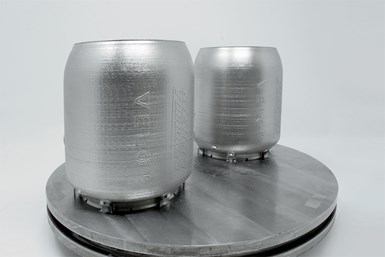
Two 3D printed turbine combustors that serve as the core of Sierra Turbines’ small engine. They are compact enough to fit in the palm of a hand. Additively manufacturing these engine components took about 50 hours versus months that would have been required for traditional manufacturing. Photo Credit: Velo3D
The recently printed geometry of the Aurelius Mk1 core is a work-in-progress that has helped us define what is possible in terms of component integration and “printability” in Hastelloy X. Our work going forward highlights another benefit of additive: It enables development of a product without the burden of large tooling costs or expensive prototypes.
For future gas turbine development, we aim to further leverage the power of AM to integrate features such as an efficiency-boosting heat exchanger, integrated sensors, and more novel insulation and cooling geometries. Whatever innovative designs we come up with, we are confident that advanced additive manufacturing capability can produce it.
Related Content
Concept Sneaker Boasts One-Piece 3D Printed TPU Construction
The Reebok x Botter Concept Sneaker Engineered by HP premiered at Paris Fashion Week, hinting at manufacturing possibilities for the future of footwear.
Read More3D Printed "Evolved Structures" for NASA Exoplanet Balloon Mission: The Cool Parts Show #61
Generative design creates stiff, lightweight brackets for EXCITE mission monitoring planets orbiting other stars. The Cool Parts Show visits Goddard Space Flight Center.
Read MoreAdditive Manufacturing Versus Cavitation
The design freedom possible with laser powder bed fusion (LPBF) metal 3D printing is making it faster and easier to produce complex anticavitation devices for valves.
Read MoreWhat Does AM Want? Here Are 4 Aims (Maybe 5) That Additive Manufacturing Is Driving Toward
Certain freedoms and contributing factors allow additive manufacturing to realize its full promise for production.
Read MoreRead Next
Drone Engine Replaces 13 Parts With 1: The Cool Parts Show #14
Cobra Aero discovered an opportunity for redesign it might never have found without the COVID-19 interruption providing time for product development via 3D printing. The Cool Parts Show explores how additive manufacturing is advancing during the coronavirus crisis.
Read MoreThis Rocket Fuel Injector Is a Solid Part That Contains a Working Motor: The Cool Parts Show #1
Our new video series debuts with a look at a solid metal part made through additive manufacturing that was built with a motor embedded inside. The motor sealed within the part adjusts the rocket’s fuel mixture while the rocket is in flight.
Read MoreWhat Is the Role for Additive Manufacturing in Aircraft Structural Components?
Spirit AeroSystems recently began installing the Boeing 787’s first titanium structural component to be made through AM. The part is not critical but also not minor. I spoke with manufacturing leaders at Spirit about the meaning of the part and the way forward for additive in aircraft structures.
Read More

